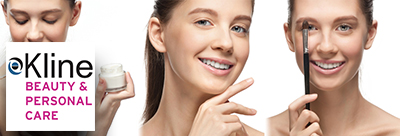As formulators are increasingly selecting specialty ingredients to improve the performance of their formulations, the share for such personal care ingredients has increased from 40% to 45% over the past several years, finds Kline’s recently published Personal Care Ingredients: Global Market Analysis. This report consists of concise regional reports per ingredient group and a comprehensive database containing data on over 130 personal care ingredients in all key regional markets.
The growing popularity of multifunctional products results in growth in the consumption of performance-oriented multifunctional ingredients, driving the promising specialty sector. For example, consumption of preservative boosters, such as caprylyl glycol, glyceryl caprylate, and ethylhexylglycerin, is growing at the expense of traditional preservatives as they also deliver emolliency to formulations. Similarly, PEG derivatives that act as a rheology modifier and also have emulsifying properties have increased over the past few years and are expected to grow further in the future.
Skin care and hair care are the leading ingredient-consuming applications and have similar shares in most regions, except in Brazil, where hair care is the leading application. As skin care and hair care are the largest applications, the ingredients groups within these applications are also leading the market. For instance, emollients, the key ingredient in skin care, are the leading ingredient group within the personal care ingredients market, closely followed by surfactants, which are key ingredients for all applications, and conditioning polymers, which are mainly used in hair care applications.
Synthetic ingredients are dominating the personal care ingredient industry, but natural ingredients are increasing their share as consumers are looking for products with such ingredients. However, natural ingredients are more prone to microbial attacks and also face compatibility issues with other ingredients in various formulations that could adversely affect their growth.
The personal care ingredients supplier landscape is relatively fragmented. While BASF, Dow Corning, Croda, and Ashland are the leading suppliers of ingredients by sales value, three different types of suppliers can be observed in this industry. The first are multinational suppliers, such as BASF and Croda, who are present in almost all the ingredient groups within a cosmetic formulation. The second type is suppliers like Dow Corning, who have a significant presence in few ingredient groups like conditioning polymers, and specialist suppliers, such as Huber and Roquette, who have leading positions for heavily consumed hydrated silica and sorbitol, respectively. The third category consists of regional suppliers, such as Guangzhou Tinci in China or Seiwa Kasie in Japan.
Globally, sales of specialty ingredients are expected to increase at a compound annual growth rate of 2.8% during 2015-2020 and will cross the USD 10 billion mark by 2020. All the ingredient groups are expected to grow, with UV absorbers leading this growth. Consumption growth will vary by region. “For example, parabens are expected to decline in the United States, but not in other regions,” comments Kunal Mahajan, the report’s project manager. “Ingredients like BNPD or triclosan are expected to decline, but will show some growth in a few developing countries as the awareness about harmful effects of these ingredients is low there, which explains why the usage of these ingredients continues to grow in countries like India.” Replacement of traditional preservatives due to regulations will boost the demand for other alternative ingredients, such as organic acids and boosters.
For additional global fast facts, REQUEST a fact sheet. Or attend our in-cosmetics 2016 presentation – Challenges and opportunities in the U.S. personal care ingredients market.
Want to learn more about the key recent developments in the personal care and active ingredients industries? Follow our new LinkedIn showcase page:


